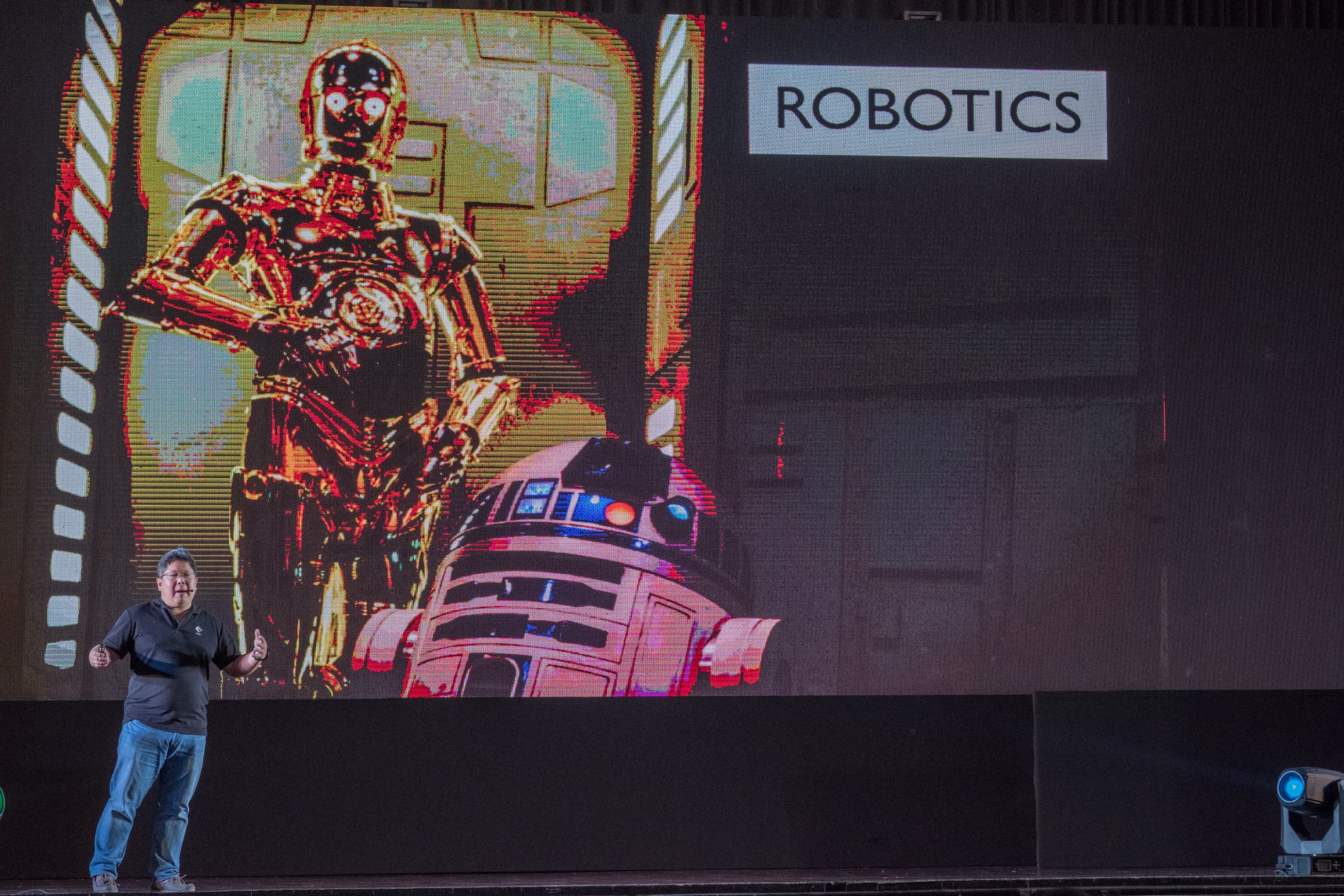Exploring Deep Tech: The Obscure and Unknown in a Changing Digital World
“Logical innovations are happening all around the world, because like deep technology, the Cambodian tech ecosystem is on the cast of explosive growth and innovation.” At the Cambodia Tech Summit 2018, Paul Ark, Managing Director of Digital Ventures, shares about the current technology as well as implications of the local ecosystem.

Photo: Smart for Cambodia
Digital Ventures is the fintech arm of Siam Commercial bank, which invests in core technology that cuts across a wide variety of industries outside financial services like AI, big data, block chain, cybersecurity, geolocation and quantum computing.
What is Deep Tech?
Companies founded on a scientific discovery or meaningful engineering innovation… These are transformational companies that will change the face of the planet in coming decades.
The implication of this is that deep tech involves startups grounded on scientific or engineering innovation rather than business model or process innovation.
Both digital tech and deep tech follows exponential growth patterns, not linear.
Computing power is an example of visible exponential growth, such that the computing power that we hold in our pockets today is more powerful than that of the world’s back when humans landed on the moon. Furthermore, this is achieved at a much cheaper cost than ever imagined.
Exponential growth is also going beyond electronics, like energy. Solar technology has experienced an exponential drop in price. It is at the cross over point where in certain parts of the world, the cost of solar technology is cheaper than traditional fossil fuels. Similarly, genomic sequencing has a cost pattern that is more aggressive than traditional exponential growth. Its cost has dropped from billions in the 90s to thousands of dollars, and is expected to cost pennies in the next few years.
Technology Today
AI
AI is becoming better at diagnosing medical maladies than human diagnosticians. Smarts phones are used to take photos of cancerous skin lesion, then the AI will determine whether if it is malignant or benign. IBM was able to diagnose cancer with a much higher rate of success than traditional doctors. Other examples of AI use are surveillance, security and medicine.
AI is impacting a wide variety of industries, and one adjacent industry is the area of robotics.

Photo: Smart for Cambodia
Robotics
The maneuverability in robotics is changing exponentially. One of the popular fears about robotics is that if even they do not kill the human race, they may take people’s jobs away.
But what we are seeing is robotics not replacing entire jobs, but replacing certain tasks of our jobs.
This allows humans to be freed up to do more value added tasks, while delegating more repetitive minor tasks to the robots. This is evident in the Amazon fulfillment centre where robots and human interaction improved efficiency by 20%, resulting in 15 minutes to fill some orders, instead of 90 minutes.
Drone Tech
In Asia, the proliferation of drones in the region for business and recreation use has risen in the past few years. This example in East Africa is more about the use case than the technology in a country that may not have fully developed infrastructure. Drones are used to get blood out to areas of the country with less accessible infrastructure. While it might have taken hours to get a blood transfusion to someone, it can now take about 30 to 40 minutes.
There are technologies looking to bypass autonomous vehicles, and the flying taxi drone is one potential disruptor. Taxi drone space is occupied by companies such as EHang, Intel, Airbus and Boeing. Some areas in the Middle East are attempting to steer away from traditional infrastructure development to flying drones, which can be a good solution for traffic problems.
3D Printing
People are accustomed to seeing 3D printers as novelty items, but increasingly, incredible applications are pushing the edge. There are 3D printing companies that operate in outer space at zero gravity. Besides printing large components for space station, 3D printers can also print biological organs on a small scale. Found in Bangkok, Meticuly is able to scan bones and 3D print a surgical implant with much lesser cost and time than traditional production and shipping of implants. The profound aspect of this example is that
… deep tech is not just about global talent impacting and solving local problems, but you are seeing local entrepreneurs creating solutions to solve global problems.
Food
Deep tech advancements are affecting the food space. As for plant based meat, a popular example is the Impossible Burger. It uses a special ingredient called Heme, found in both plants and the animal’s blood, to give the same unique meatiness from a cow. Plant based meats or meat cultured from animal DNA have a number of ripple effects.
- It contributes to a much smaller carbon footprint. In contrast, the cattle industry produces a phenomenal amount of waste, consumes a lot of water and requires a lot of feed, resulting in a lot of antibiotics in the agriculture.
- The feel good factor is achieved for people who worry about animals suffering, as meat can be cultured from plant and animal DNA without killing animals.
- The cost of producing food is reduced. This is becoming more important when considering food accessibility and security in the 21st century as the world population grows.
Photo: Wahlburgers // Impossible Foods
Implications
Digital technologies represents opportunities for companies to “leapfrog”. Deep tech allows companies to leapfrog without having to catch up on legacy technologies. Much in the way mobile telephony allowed Asia to leapfrog over North America and Europe, without having to catch up in terms of landmine, copper, wire based infrastructure.
STEM education and R&D investment impact a wide cross-section of downstream industries. They can result in innovations that impact every sector of our economies.
Developing an innovation ecosystem is collaboration of entrepreneurs, investors, corporate, academia and government. No ecosystem in the world got off the ground without tacit support from the government.
Innovation requires capital and patience, there are no “quick fixes”. Sometimes, a different way of thinking is required, because most corporate and government have a limited period of time in which they can create an impact on their organisations. At times, it may also require a longer amount of patience.
Think about job creation, not company creation. This is an important distinction as startups fail a lot. Failing is a natural part of the creative and disruptive force of innovation. But essentially, the more startups you create, the more jobs you create. The losing companies will go out of business, but the winning companies will grow and scale. Subsequently, they find their talent from startups that didn’t work out.

Photo: Pixabay
“Skate to where the puck is going to be, not where it has been.” Sharing Canadian hockey player, Wayne Gretzky’s secret to success, Mr. Ark explains that innovation is not looking at backwards trends, it is looking at forward potential.
Today’s Deep Tech is Tomorrow’s Everything Tech.
ลงทะเบียนเข้าสู่ระบบ เพื่ออ่านบทความฟรีไม่จำกัด






